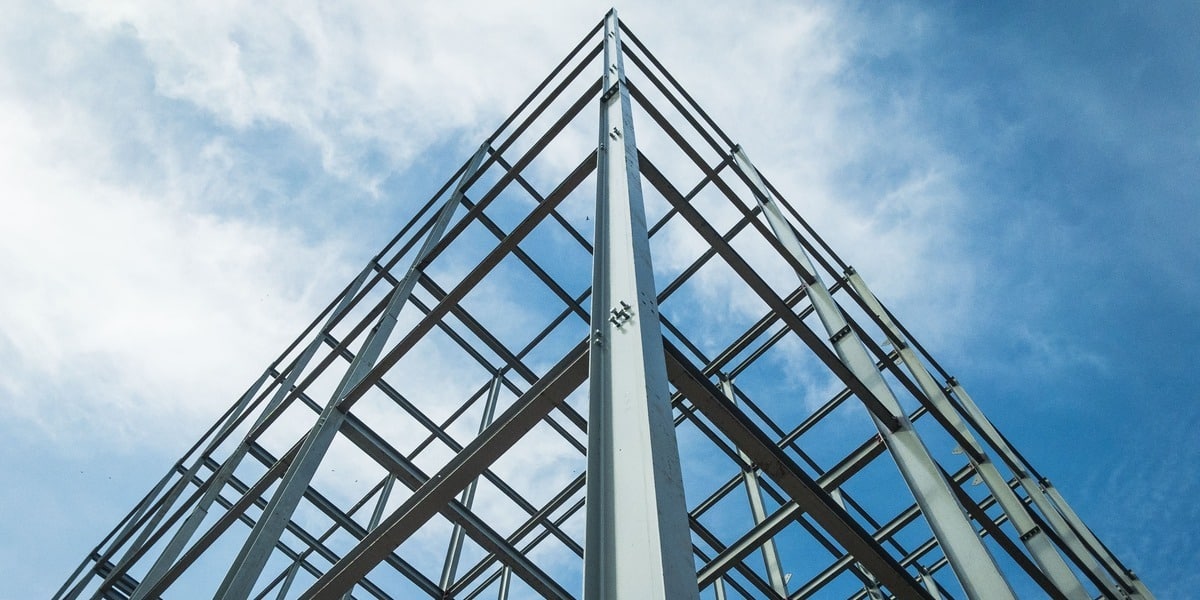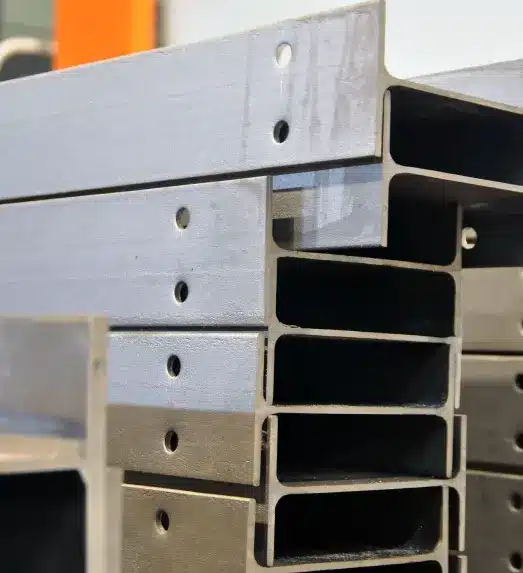In this blog post, we will explore the pivotal role of steel beams in construction projects. From providing structural support to facilitating open and flexible spaces, steel beams serve as the backbone of modern construction. Join us as we delve into the various applications, and design considerations of steel beams, showcasing how they contribute to the success of diverse building projects.
The Basics of Steel Beams
Structural elements like steel beams support load-bearing walls, floors, and roofs. They are durable and strong as well as highly resistant to stress and deformation.
Steel beams come in different types, such as I-beams, H-beams, and wide flange beams. Each of these types has its unique characteristics that make it ideal for specific applications.
I-beams have a cross-section shaped like an “I”, hence their name. These are widely used in construction because of their high strength-to-weight ratio.
As expected, H-beams have a cross-section shaped like an “H” and are commonly used for vertical columns and in heavy-load applications.
Wide flange beams have a wider flange compared to I-beams, and they are commonly used in large construction projects as load-bearing structural members.
Working with and customizing steel beams is easy. They can be cut to length, drilled, welded, and bolted together to create various shapes and sizes. Also, because we can produce steel beams on a large scale, they are readily available and more affordable than other materials.
Applications of Steel Beams
From towering skyscrapers to cozy homes, structures rely on steel beams for support and stability, especially against natural forces and daily wear and tear.
In homes with open floor plans, steel beams support the weight of the upper floors, eliminating the need for intervening columns or walls.
Builders use steel beams when constructing basements, providing a sturdy framework for the foundation walls and reinforcing the structure against potential soil movements and moisture intrusion. Additionally, some retaining walls use steel beams for construction, creating a sturdy barrier against soil erosion and landslides.
In commercial and industrial projects, steel beams are perhaps even more ubiquitous. Large-scale office buildings, factories, and warehouses all require the strength of steel to support their massive weight and to provide long spans of uninterrupted space.
For example, the Willis Tower in Chicago, formerly the Sears Tower, uses a steel frame that enables it to reach heights of over 1,450 feet, making it one of the tallest structures in North America. The Empire State Building, completed in 1931, also owes its towering height and iconic silhouette to a steel framework that provided the necessary strength and stability.
Other architectural marvels that rely on steel beams include the Burj Khalifa in Dubai, which stands at over 2,700 feet tall, as well as the Gateway Arch in St. Louis, Missouri.
The unique “catenary curve” design of the Gateway Arch in St. Louis utilizes a double-layer of steel beams for support. Even bridges, such as the Golden Gate Bridge in San Francisco, rely on steel beams to provide support and strength.
From iconic buildings to everyday homes, steel beams continue to play a vital role in shaping the built environment and ensuring that our structures remain safe and sound for years to come.
Compatibility with Other Materials
Another significant advantage of steel beams is their compatibility with other building materials such as concrete and wood. Integrated and hybrid construction harnesses the best features of each material, resulting in cost-effective and robust buildings that are capable of withstanding environmental challenges.
Steel beams, when combined with concrete, enhance the building’s structural integrity and tensile strength. The high strength-to-weight ratio of steel enhances the resistance to buckling and reduces deflection, leading to a more stable and secure structure.
More builders are combining steel beams with wood in hybrid construction methods. The combination of steel and wood allows for a range of structural and design possibilities, resulting in aesthetically pleasing and sustainable buildings.
Steel beams offer diverse design opportunities when paired with other materials.
As we can see, steel beams undoubtedly play a critical and irreplaceable role in construction. Their unmatched strength, versatility, and design flexibility make them the backbone of modern architecture, ensuring the creation of sturdy and enduring structures that stand the test of time.
As you embark on your next construction project, consider the power of steel beams in elevating your vision to reality. And for top-quality reinforcing and steel solutions, look no further than DWR, Reinforcing & Steel Solutions Manufacturer.
As a trusted North American producer of reinforcing and steel solutions, we ensure our products meet the high demands of the construction industry.
Discover the vast array of steel solutions we offer, tailored to cater to diverse project needs. Let DWR be your partner in constructing a future built on the strength and reliability of steel. To learn more about our products and services, contact us.
Build with confidence, build with DWR. Together, let’s construct a more resilient and innovative built environment, one steel beam at a time.

